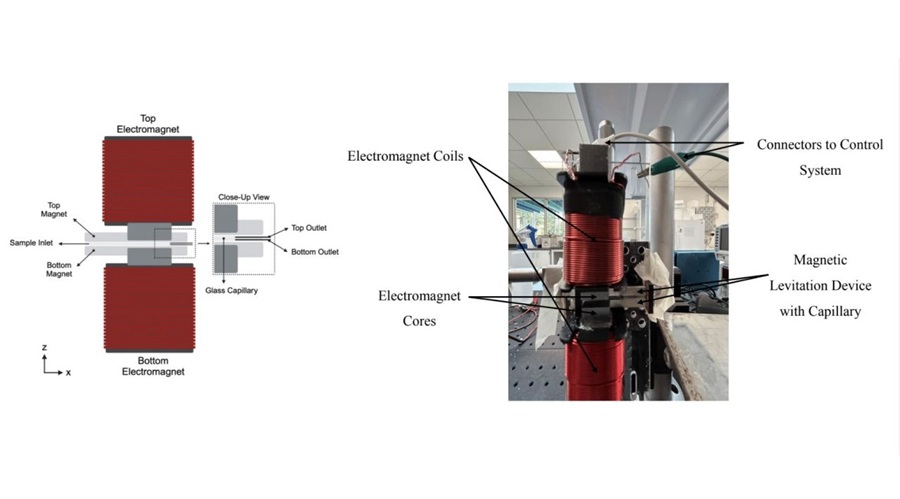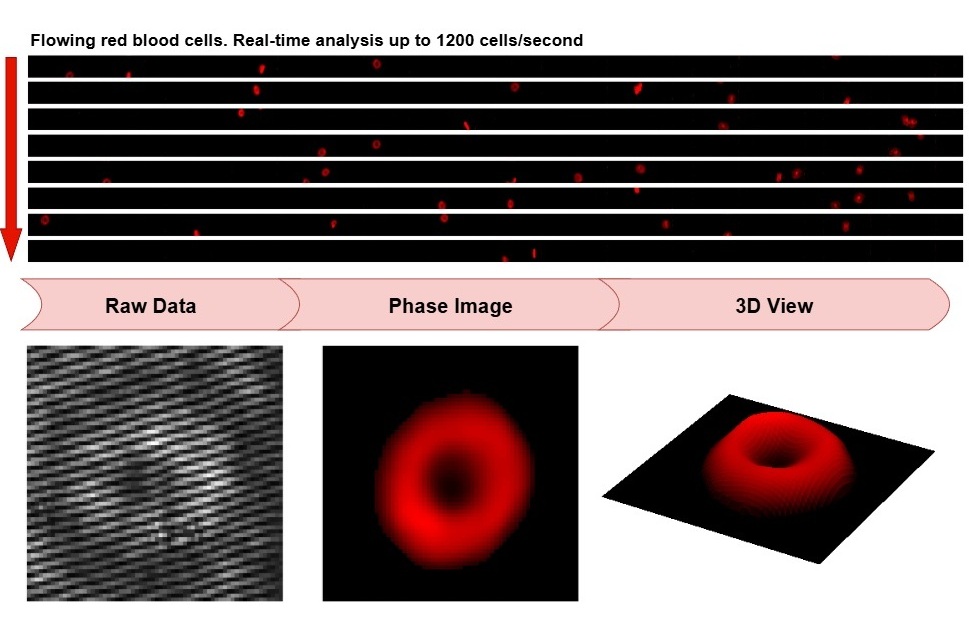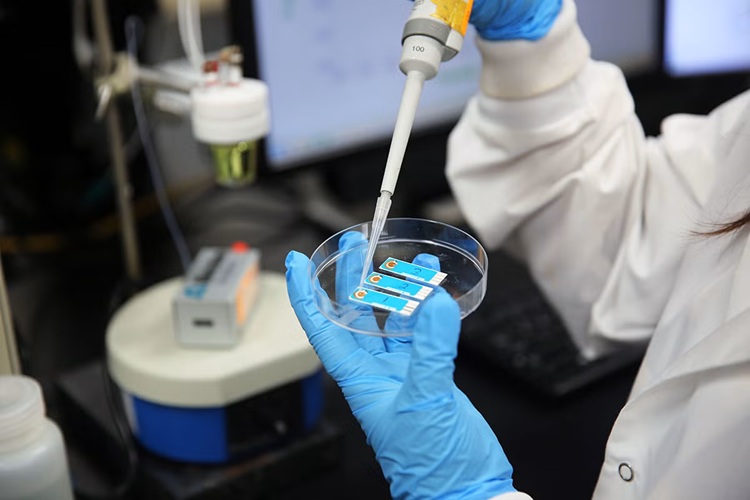Microfluidic Probe Tested for Diagnosing Cancer
By LabMedica International staff writers
Posted on 19 Dec 2013
A prototype compact and easy-to-use device may help unravel tumor heterogeneity and assist in personalized treatment strategies.Posted on 19 Dec 2013
A critical step in the diagnosis of cancer is the analysis of a patient's biopsy tissue sample, which sometimes can be very small, but even with such sample pathologists can test for the absence or presence of tumor cells and provide important information pertaining to the course of treatment to doctors.

Image: The vertically oriented microfluidic probe (vMFP) (Photo courtesy of IBM Research-Zurich).
Scientists at University Hospital Zürich (Switzerland) collaborated with the IBM Research-Zurich team (Rüschlikon, Switzerland) and developed an innovative technology called a microfluidic probe which can interact with tissue sections at the micrometer scale to help unravel some of the molecular variations within tumors. The collaboration puts a strong emphasis on uncovering the heterogeneity of tumors and more specifically, the collaboration focuses on lung cancer, which is one of the most prevalent forms of cancer and has a high mortality rate.
The eight-millimeter-wide, diamond-shaped probe consists in its simplest form of a silicon microfluidic head ending with a small tip bearing two microchannels. The probe injects very small volumes of reagents on the tissue surface and then continuously aspirates the reagents to prevent spreading and accumulation. This approach is used to deliver and retrieve reagents locally in selected areas of a tissue section with pinpoint accuracy. This local interaction with the tissue sample helps in mapping the heterogeneity in the tissue.
Govind Kaigala, PhD, a scientist at IBM Research, said, “For about a year, we have been testing the probe in our laboratory, and initial results are very encouraging and we are now developing the technology in the context of important aspects in pathology. Over the next several months, we will install a prototype device at the hospital and work alongside pathologists.” The microfludic probes are designed and manufactured at the Binnig and Rohrer Nanotechnology Center on the campus of IBM Research. The microfluidic probe was recently presented on October 2 2103 at the TEDxZurich conference held in Zurich (Switzerland).
Related Links:
University Hospital Zürich
IBM Research-Zurich














